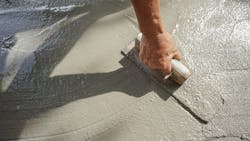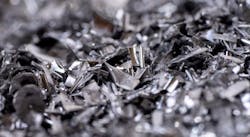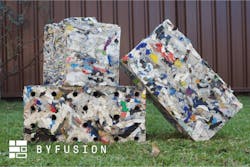Eco-Friendly Concrete Alternatives
Concrete for centuries has been one of the most commonly used materials to build and reinforce bridges, roads, commercial buildings, and residential structures. It’s also one of the largest polluters on earth. Concrete used for construction accounts for upwards of 4 billion tons of carbon emissions annually, which has led to the emergence of several, cleaner alternatives.
Hempcrete
Hempcrete blocks manufactured by Hempitecture are formed from hemp hurds mixed with lime and water. (Photo: Hempitecture)
Hempcrete first emerged in the early 1990s for the construction of non-weight bearing infill walls in France, and while its application in residential and commercial projects is still limited in the U.S., builders are beginning to experiment with new products as a substitute for concrete. Hempcrete is created by mixing hemp hurd with lime and water, and not only is the final product more eco-friendly than traditional concrete, but it also weighs only about an eighth of regular concrete products.
According to Hemp Squared, a commercial producer of industrial hemp blocks, the CO2 emissions balance of hempcrete is 110kg/m3, meaning that per cubic meter of hempcrete, 110kg of carbon dioxide is sequestered.
Hemp can be grown in a range of soils and climates, making it an easy-to-harvest crop all across the globe, and while its R-value of 2.4-4.8 per inch is much higher than concrete, its compressive strength is only 1/20 that of concrete, meaning that it can't be used as a foundation material or in load-bearing situations, according to Hempcrete Natural Building.
Still, companies like Hempitecture are offering blocks made from hemp that create a fire-resistant insulated barrier for residential structures. Hempitecture’s ISOHemp building blocks from Belgium, not only seal and protect existing structures but also absorb carbon during the curing process which keeps homes clean and healthy. Hempitecture also offers Hemp Hurd and Lime Binder materials for traditional cast-in-place hempcrete buildings.
Ashcrete
Ashcrete Technologies creates ashcrete from cementitious fly ash for a finished product that is more durable than traditional concrete. (Photo: Ashcrete Technologies)
Manufactured by companies like Ashcrete Technologies, ashcrete is a resilient concrete alternative that combines MSW I. Fly Ash with acid and nanocomposites to create a dense, sand-like material that dries with an average weight of 1.8092 g/cm3 and a compressive strength of >3000 psi, the company says.
Fly ash has natural pozzolanic (cementitious) properties that make it a viable alternative for cement in concrete mixtures, meaning that when fly ash reacts with calcium hydroxide in water, the resulting material is, in some cases, actually stronger than regular cement. The Romans were the first to experiment with an early form of ashcrete by using volcanic ash to build aqueducts and historic structures that are still standing today.
Ashcrete Technologies’ process generates no residual waste and results in a durable material that can be used in infrastructure development or in marine environments.
Ferrock
Ferrock is sourced from recycled steel particles and silica. (Photo: Stock.adobe.com)
Ferrock is an eco-friendly cement alternative that is formulated by mixing recycled materials like waste steel dust and silica from ground-up glass with ferrous rock and water. The mixture is then exposed to a high concentration of carbon dioxide to create a solid material with a strength of up to 69 Mpa, five times the average strength of traditional concrete.
In addition, ferrock has been proved to perform with greater flexibility than standard concrete, making it an optimal choice for developers in seismic regions.
Because ferrock is a relatively new product, a limited supply of the material is available at a high cost, which is why it’s mostly used for niche projects and applications, but as more builders seek out greener alternatives to major pollutants like concrete, its popularity is on the rise.
Recycled Plastic
ByFusion Global produces compact ByBlocks made from recycled plastic. (Photo: ByFusion Global)
Founded in 2017, ByFusion Global, Inc. is working to transform plastic waste into resilient bricks known as ByBlocks. The construction-grade building material is made entirely from repurposed plastic that is shredded, superheated, and fused into 15.5″ L x 7.75″ D x 8″ H blocks.
ByBlocks produce 83% less CO2 emissions than concrete blocks and require no glue or adhesives, and though the finished product isn’t as strong as traditional concrete, ByBlocks can be used for retaining walls, furniture, fencing, and more.




